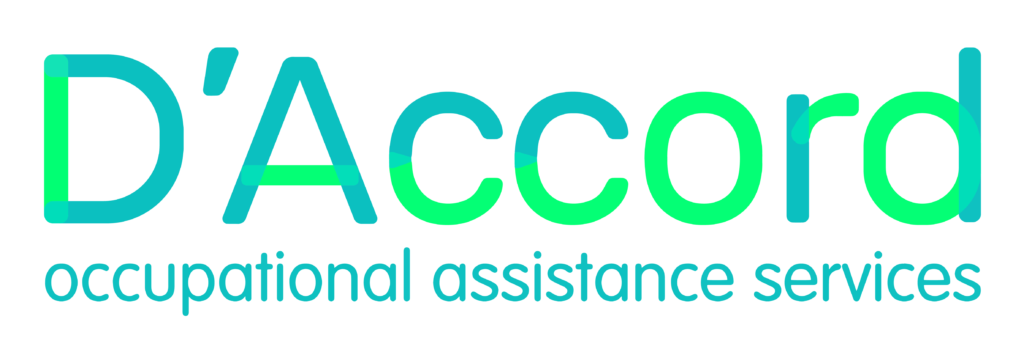Maintaining good mental health at work and optimizing performance through effective fatigue management in the workplace is vital, and it’s a shared responsibility between employees and employers.
Recent research from the National Safety Council attributes 13% of workplace injuries to fatigue, underscoring its profound impact on safety and performance hazards.
This article will elaborate on the real impact of fatigue, its common causes, and how to mitigate these effects by implementing fatigue management strategies for employees and employers.
The Impact of Fatigue in the Workplace

Fatigue is more than just feeling tired; as defined by Safe Work Australia, it is a state of feeling tired, weary, or sleepy that reduces one’s ability to work safely and effectively.
This pervasive condition arises from factors like insufficient sleep, prolonged mental or physical work, or extended periods of stress and anxiety, ultimately disrupting your natural circadian rhythm.
When fatigue takes hold in the workplace, its consequences are far-reaching and detrimental to both individuals and the organization.
Fatigue directly impairs a worker’s ability to perform, significantly affecting their work rate. It leads to errors and accidents, profoundly impacting workplace safety and productivity, which can range from minor mistakes to severe safety hazards.
Occupations demanding high levels of concentration or physical exertion are particularly vulnerable, clearly demonstrating how fatigue affects various occupations.
The most common results of fatigue include a noticeable decreased work output, poor decision-making, and increased near-miss incidents.
Beyond productivity and safety, prolonged fatigue can also negatively impact employee morale, engagement, and overall well-being.
Now that we’re on the same page about the significant impact of fatigue in a workplace, let’s move forward on how to implement effective fatigue management strategies.
Implementing Fatigue Management in the Workplace

Effective fatigue management requires a dual approach, addressing strategies from both the employee’s personal perspective and the employer’s organizational responsibilities.
a. From Employee/Personal Perspective
Effective fatigue management begins with the individual, as employees play a critical role in recognizing and mitigating their own fatigue levels. These are four strategies for fatigue management in personal domain:
1. Prioritize Quality Sleep
Quality sleep is the bedrock of effective fatigue management. Employees must establish and adhere to a consistent sleep schedule, even on weekends, to regulate their body’s natural sleep-wake cycle.
To maximize restorative rest, it is essential to create a conducive sleep environment (dark, quiet, and cool) and practice good sleep hygiene, such as avoiding excessive screen time, caffeine, and heavy meals before bed.
2. Take Regular Breaks
Throughout the workday, incorporating regular breaks is crucial for maintaining alertness and preventing mental and physical exhaustion.
These don’t need to be long; even short, purposeful breaks like stepping away from the screen, stretching, or taking a brief walk can refresh the mind and body.
During these moments, consider taking a few minutes to listen to some meditation music; it’s a quick way to reset your mind and reduce mental fatigue before returning to tasks.
This practice helps to break up monotony, reduce cognitive load, and sustain focus for longer periods.
3. Manage Personal Stress
Stress is a major contributor to fatigue, often disrupting sleep and draining energy. Employees should actively engage in personal stress management techniques.
This can include regular physical exercise, practicing mindfulness or meditation, engaging in hobbies outside of work, or spending time with loved ones.
Developing healthy coping mechanisms for stress empowers individuals to stay focused and efficient during busy work by maintaining their energy levels and emotional resilience, which directly impacts their ability to function effectively.
4. Communicate Fatigue Concerns
Open and honest communication about fatigue is vital for both personal well-being and workplace safety.
Employees should feel empowered to communicate when they are feeling overly tired or recognize symptoms of fatigue in themselves.
This includes reporting to their supervisor if their fatigue levels could potentially compromise their safety or the safety of others, ensuring that appropriate adjustments or support can be provided.
b. From a Company/Employer Perspective
While individual responsibility is crucial, employers are primarily responsible for creating a work environment that minimizes fatigue risks and supports employee well-being.
1. Optimize Shift Schedules and Rostering
Employers should meticulously design and implement shift schedules and rostering practices that prioritize employee recovery and align with natural human circadian rhythms.
This involves avoiding excessive overtime, minimizing quick turnarounds between shifts, and ensuring predictability in schedules where possible.
Thoughtful rostering reduces cumulative fatigue, enhances alertness, and significantly lowers the risk of fatigue-related errors and accidents.
2. Provide Adequate Rest and Meal Breaks
Beyond just shift length, ensuring employees receive ample and meaningful rest and meal breaks during their work hours is critical.
These breaks should be legally compliant and, more importantly, genuinely allow for disengagement and recovery.
Employers should provide comfortable and quiet spaces for rest and meals, encouraging employees to fully utilize their break time to recharge, both mentally and physically, before resuming their duties.
3. Offer Employee Assistance Programs (EAP)
A cornerstone of comprehensive employee well-being is the provision of robust Employee Assistance Programs (EAP).
These confidential, external services offer vital support for employees grappling with stress, burnout, sleep issues, or personal challenges that can contribute to fatigue.
By offering an EAP that is accessible and culturally sensitive, companies provide a proactive and confidential avenue for employees to seek professional help,
thereby demonstrating a strong commitment to their mental health, overall resilience, and fostering an inclusive environment that values diversity in the workplace.
4. Review Workloads and Staffing
Excessive workload and insufficient staffing are significant drivers of workplace fatigue. Employers must regularly review work demands and staffing levels to ensure they are realistic and sustainable. This involves assessing task complexity, project deadlines, and the overall volume of work.
Adequately resourcing teams and managing expectations helps prevent employees from feeling overwhelmed, reducing the need for excessive hours and mitigating chronic stress that leads to persistent fatigue.
Ready to Implement Fatigue Management in the Workplace?
Is workplace fatigue impacting your employees’ well-being, productivity, or safety? While organizational strategies are key, individual support is often vital for fatigue management.
Suppose you or your team members are struggling with persistent tiredness, stress, or burnout. In that case, D’Accord OAS’s professional Counselling services can provide tailored strategies and support to help regain energy, improve mental well-being, and thrive in the workplace.











